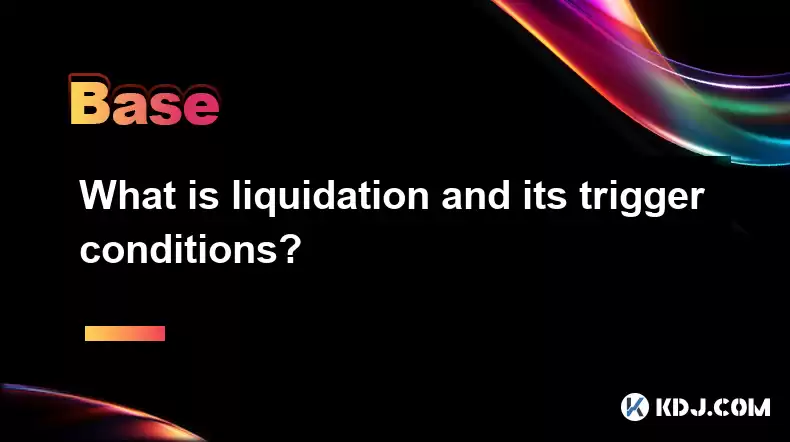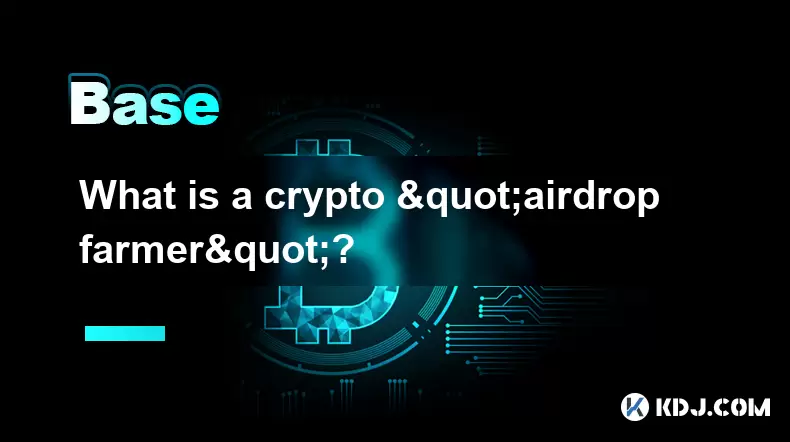-
 Bitcoin
Bitcoin $117300
-0.11% -
 Ethereum
Ethereum $3713
0.78% -
 XRP
XRP $3.124
-0.30% -
 Tether USDt
Tether USDt $1.000
-0.03% -
 BNB
BNB $780.4
1.65% -
 Solana
Solana $185.0
1.22% -
 USDC
USDC $0.0000
0.00% -
 Dogecoin
Dogecoin $0.2342
2.26% -
 TRON
TRON $0.3171
0.98% -
 Cardano
Cardano $0.8166
1.07% -
 Hyperliquid
Hyperliquid $44.02
5.30% -
 Sui
Sui $3.949
6.96% -
 Stellar
Stellar $0.4335
2.55% -
 Chainlink
Chainlink $18.27
3.07% -
 Hedera
Hedera $0.2636
10.41% -
 Bitcoin Cash
Bitcoin Cash $553.6
6.11% -
 Avalanche
Avalanche $23.95
1.68% -
 Litecoin
Litecoin $112.8
1.50% -
 UNUS SED LEO
UNUS SED LEO $8.985
0.02% -
 Shiba Inu
Shiba Inu $0.00001397
3.44% -
 Toncoin
Toncoin $3.193
2.54% -
 Ethena USDe
Ethena USDe $1.001
-0.06% -
 Uniswap
Uniswap $10.42
4.00% -
 Polkadot
Polkadot $4.087
2.51% -
 Monero
Monero $323.7
-2.21% -
 Dai
Dai $0.0000
-0.02% -
 Bitget Token
Bitget Token $4.568
0.24% -
 Pepe
Pepe $0.00001250
2.88% -
 Aave
Aave $295.8
2.98% -
 Cronos
Cronos $0.1326
4.07%
什麼是清算及其觸發條件?
當抵押品降至維護利潤率以下時,會在加密交易中清算,從而觸發平台以關閉位置以防止進一步的損失。
2025/04/10 04:15

什麼是清算及其觸發條件?
在加密貨幣交易的背景下進行清算,特別是在分散融資(DEFI)和保證金交易領域內,這是指交易員的頭寸由於資金不足以維持職位而被強行關閉的過程。當市場反對交易者的地位時,這會發生這種情況,從而導致其抵押品的價值低於一定閾值。了解清算及其觸發條件對於從事槓桿交易或使用Fefi平台的任何人至關重要。
清算的基礎知識
清算是一種風險管理機制,旨在保護交易者和平台免受重大損失。當交易員使用槓桿開放職位時,他們本質上是藉資金來擴大其交易能力。借貸金額由抵押品保證,這通常是交易者自己的加密貨幣持有。如果市場不利地移動,則抵押品的價值可能會下降,如果降至預定水平以下,則該位置將被清算以防止進一步的損失。
清算類型
加密空間中有兩種主要清算類型:部分清算和完全清算。
- 當只有一部分交易者位置關閉以將抵押品恢復到安全水平時,就會發生部分清算。這使交易者可以在降低風險的同時保持一定的市場風險。
- 當整個位置關閉時,就會完全清算,並且使用交易者的抵押品來彌補損失。當附帶值顯著下降以下時,通常會觸發這一點。
觸發清算條件
清算的觸發條件主要基於邊緣水平的概念。交易者需要注意兩個關鍵的利潤率:初始保證金和維護保證金。
- 初始保證金是打開槓杆位置所需的最小抵押品。這是由交易平台設置的,並且根據資產和槓桿水平而有所不同。
- 維護保證金是保持位置開放所需的最低抵押品。如果附帶的價值低於此水平,則該位置有被清算的風險。
清算的特定觸發條件是當側支值降至維護餘量以下時。根據平台的規則,這可以表示為總位置值的百分比或絕對金額。
影響清算的因素
幾個因素可以影響清算的可能性,包括:
- 市場波動:高波動性增加了價格快速變動的風險,可以將附帶價值推向維護利潤率以下。
- 槓桿水平:更高的槓桿率會增加損益,從而使位置更容易被清算。
- 資產類型:不同的加密貨幣具有不同水平的波動性和流動性,這可能會影響清算風險。
- 平台規則:每個交易平台都有自己的清算規則和參數集,交易者必須理解並遵守。
如何避免清算
為了最大程度地減少清算風險,交易者可以採取幾個步驟:
- 密切的監控位置:定期檢查抵押品的價值和市場狀況,以預測潛在的清算風險。
- 使用止損訂單:設置停止損失訂單可以幫助限制損失,並防止位置到達清算點。
- 調整槓桿:降低杠桿水平可以通過減少抵押品來維持位置來降低清算風險。
- 多元化:在不同資產上傳播投資可以減少單個資產的價格變動對整體投資組合的影響。
清算過程
清算職位時,該過程通常涉及以下步驟:
- 檢測:交易平台的系統檢測到附帶價值已低於維護利潤率。
- 通知:儘管在快速發展的市場中,這可能並非總是可能的,但通常會通知交易者即將來臨的清算。
- 執行:該平台以當前市場價格自動關閉頭寸,以最大程度地減少損失。
- 和解:清算的收益用於支付借入的資金,任何剩餘的抵押品都將退還給交易者。
清算的實例
為了說明清算在實踐中的工作原理,請考慮以下假設的情況:
- 方案1 :交易員在Bitcoin上以10倍的槓桿作用打開了一個長位置,使用1,000美元作為抵押品。初始保證金要求為10%,維護保證金為5%。如果Bitcoin的價格下跌50%,則附帶價值下降至500美元,低於維護利潤率500美元(佔總職位價值的5%)。該職位被清算,交易員失去了整個抵押品。
- 方案2 :交易員以5倍的槓桿作用在以太坊上打開了一個較短的位置,使用2,000美元作為抵押品。初始保證金要求為20%,維護保證金為10%。如果以太坊的價格上漲了20%,則抵押品價值降至1,600美元,這仍然高於維護利潤率1,000美元(佔總職位價值的10%,為10,000美元)。但是,如果價格繼續上漲並且抵押價值下降到900美元,則該職位被清算,交易員將失去其抵押品的很大一部分。
常見問題
問:一旦附帶價值降至維護餘量以下,是否可以避免清算?
答:一旦附帶值降至維護餘量以下,通常不可避免地清算。但是,某些平台可能會提供寬限期,或者允許添加額外的抵押品以防止清算。檢查您使用的平台的特定規則很重要。
問:清算後剩餘的抵押品會發生什麼?
答:清算後,封閉位置的收益用於覆蓋借來的資金。任何剩餘的抵押品都將退還給交易者。如果損失超過抵押價值,則交易者可以欠平台額外的資金。
問:如何計算我的職位清算風險?
答:要計算清算的風險,您需要知道最初的邊距,維護保證金和抵押品的當前價值。然後,您可以模擬不同的市場場景,以了解抵押價值將如何變化以及它是否低於維護利潤率。許多交易平台都提供工具和計算器來幫助進行此分析。
問:是否有任何有效管理清算風險的策略?
答:是的,幾種策略可以幫助管理清算風險。其中包括使用停止損失訂單,調整槓桿水平,多樣化投資組合以及定期監視您的職位。此外,了解所使用的交易平台的特定規則和參數可以幫助您做出更明智的決策。
免責聲明:info@kdj.com
所提供的資訊並非交易建議。 kDJ.com對任何基於本文提供的資訊進行的投資不承擔任何責任。加密貨幣波動性較大,建議您充分研究後謹慎投資!
如果您認為本網站使用的內容侵犯了您的版權,請立即聯絡我們(info@kdj.com),我們將及時刪除。
- 華爾街的比特幣大富翁:ETF文件信號Crypto的即將派對
- 2025-07-26 15:10:12
- 比特幣,辛西婭·盧米斯(Cynthia Lummis)和自由金錢:紐約的觀點
- 2025-07-26 15:10:12
- 英國技術,比特幣和投資:解碼最新趨勢
- 2025-07-26 15:30:11
- 英國加密法規:比特幣會為散戶投資者開放嗎?
- 2025-07-26 15:30:11
- Chatgpt,Binance Coin,價格預測:BNB在2025年的看漲前景?
- 2025-07-26 15:35:12
- 花旗集團的比特幣預測:到2025年到2025年 - 對嗎?
- 2025-07-26 15:35:12
相關知識

CEFI和DEFI有什麼區別?
2025-07-22 00:28:43
了解CEFI和DEFI在加密貨幣世界中, CEFI (集中財務)和DEFI (分散財務)代表了兩個不同的金融生態系統。 CEFI是指類似於傳統金融機構的平台,中央當局控制運營並管理用戶資金。示例包括集中式交換,例如二元或共同基礎。另一方面, DEFI是一個基於區塊鏈技術的分散生態系統,主要是在以太坊...

如何有資格獲得潛在的加密駕駛汽車?
2025-07-23 06:49:44
了解什麼是加密駕駛飛機加密空調指的是將免費令牌或硬幣分配到大量的錢包地址,這通常是由區塊鏈項目使用的,以提高意識和採用。這些空調可能是出乎意料的,或者它們可能需要用戶的某些合格操作。為了符合潛在的空調,用戶必須了解這些事件的結構以及通常用於選擇接收者的標準。項目經常向特定加密貨幣的現有持有人或執行某...

什麼是加密“ Airdrop農民”?
2025-07-24 22:22:20
了解加密“空投農民”的作用一個加密“空投農民”是指積極參與加密貨幣氣流以積累免費令牌的個人。 AIRDROP是區塊鏈項目使用的促銷策略,將令牌分發給廣大受眾,通常以提高意識或分散代幣所有權。 Airdrop農民旨在通過戰略性地滿足這些項目設定的要求來最大化其令牌收益。這些要求可以包括諸如加入項目的電...

Sidechain和第2層有什麼區別?
2025-07-20 23:35:57
了解側chain的概念Sidechain是一個單獨的區塊鏈,該區塊鏈平行於主區塊鏈,通常是加密貨幣的主網,例如Bitcoin或以太坊。它旨在允許資產在主鍊和Sidechain之間牢固地移動。 Sidechain的主要目的是啟用實驗和可伸縮性,而不會影響主要區塊鏈。這意味著開發人員可以測試新功能,智能...

什麼是間隔鏈通信協議(IBC)?
2025-07-19 10:43:17
了解障礙鏈溝通協議(IBC)塊間通信協議(IBC)是一種跨鏈通信協議,旨在啟用不同的區塊鍊網絡之間的互操作性。它允許獨立區塊鏈可以牢固地交換數據並無信任地交換。 IBC最初是為Cosmos生態系統開發的,已成為可以在各種區塊鏈體系結構中實現的標準。 IBC背後的核心思想是為區塊鏈建立標準化的方法,以...

碎片如何提高可擴展性?
2025-07-20 01:21:49
了解區塊鏈中的碎片Sharding是一種數據庫分配技術,在區塊鏈技術中越來越多地採用以提高可擴展性。在區塊鏈的背景下,碎片涉及將網絡拆分為較小,更易於管理的片段,稱為“碎片”。每個碎片都可以獨立處理網絡交易和智能合約的一部分,從而允許多個交易在不同的碎片上同時驗證。這種並行處理能力大大減少了驗證整個...

CEFI和DEFI有什麼區別?
2025-07-22 00:28:43
了解CEFI和DEFI在加密貨幣世界中, CEFI (集中財務)和DEFI (分散財務)代表了兩個不同的金融生態系統。 CEFI是指類似於傳統金融機構的平台,中央當局控制運營並管理用戶資金。示例包括集中式交換,例如二元或共同基礎。另一方面, DEFI是一個基於區塊鏈技術的分散生態系統,主要是在以太坊...

如何有資格獲得潛在的加密駕駛汽車?
2025-07-23 06:49:44
了解什麼是加密駕駛飛機加密空調指的是將免費令牌或硬幣分配到大量的錢包地址,這通常是由區塊鏈項目使用的,以提高意識和採用。這些空調可能是出乎意料的,或者它們可能需要用戶的某些合格操作。為了符合潛在的空調,用戶必須了解這些事件的結構以及通常用於選擇接收者的標準。項目經常向特定加密貨幣的現有持有人或執行某...

什麼是加密“ Airdrop農民”?
2025-07-24 22:22:20
了解加密“空投農民”的作用一個加密“空投農民”是指積極參與加密貨幣氣流以積累免費令牌的個人。 AIRDROP是區塊鏈項目使用的促銷策略,將令牌分發給廣大受眾,通常以提高意識或分散代幣所有權。 Airdrop農民旨在通過戰略性地滿足這些項目設定的要求來最大化其令牌收益。這些要求可以包括諸如加入項目的電...

Sidechain和第2層有什麼區別?
2025-07-20 23:35:57
了解側chain的概念Sidechain是一個單獨的區塊鏈,該區塊鏈平行於主區塊鏈,通常是加密貨幣的主網,例如Bitcoin或以太坊。它旨在允許資產在主鍊和Sidechain之間牢固地移動。 Sidechain的主要目的是啟用實驗和可伸縮性,而不會影響主要區塊鏈。這意味著開發人員可以測試新功能,智能...

什麼是間隔鏈通信協議(IBC)?
2025-07-19 10:43:17
了解障礙鏈溝通協議(IBC)塊間通信協議(IBC)是一種跨鏈通信協議,旨在啟用不同的區塊鍊網絡之間的互操作性。它允許獨立區塊鏈可以牢固地交換數據並無信任地交換。 IBC最初是為Cosmos生態系統開發的,已成為可以在各種區塊鏈體系結構中實現的標準。 IBC背後的核心思想是為區塊鏈建立標準化的方法,以...

碎片如何提高可擴展性?
2025-07-20 01:21:49
了解區塊鏈中的碎片Sharding是一種數據庫分配技術,在區塊鏈技術中越來越多地採用以提高可擴展性。在區塊鏈的背景下,碎片涉及將網絡拆分為較小,更易於管理的片段,稱為“碎片”。每個碎片都可以獨立處理網絡交易和智能合約的一部分,從而允許多個交易在不同的碎片上同時驗證。這種並行處理能力大大減少了驗證整個...
看所有文章

























































































